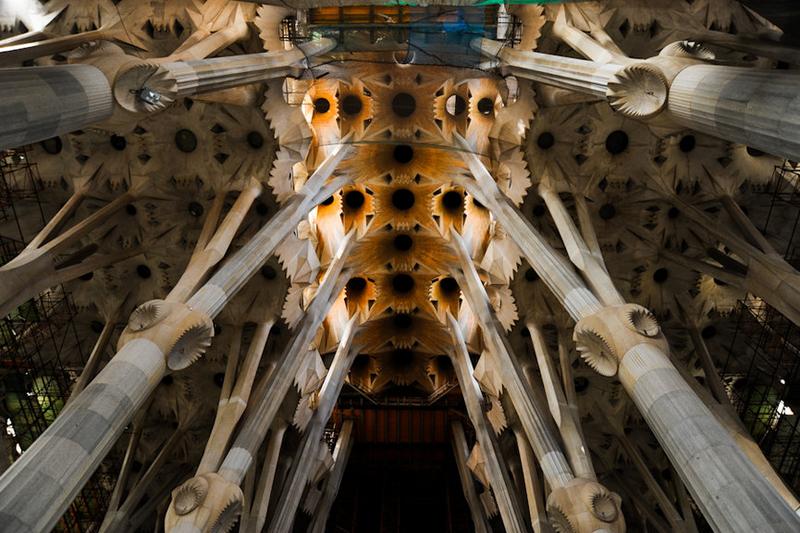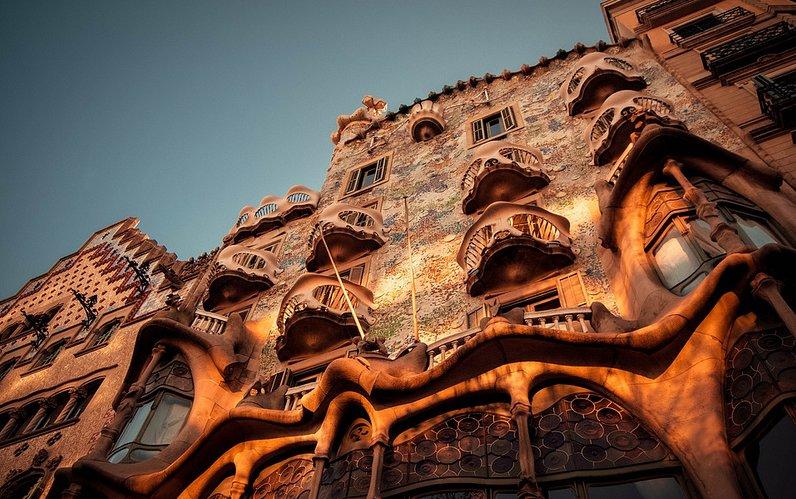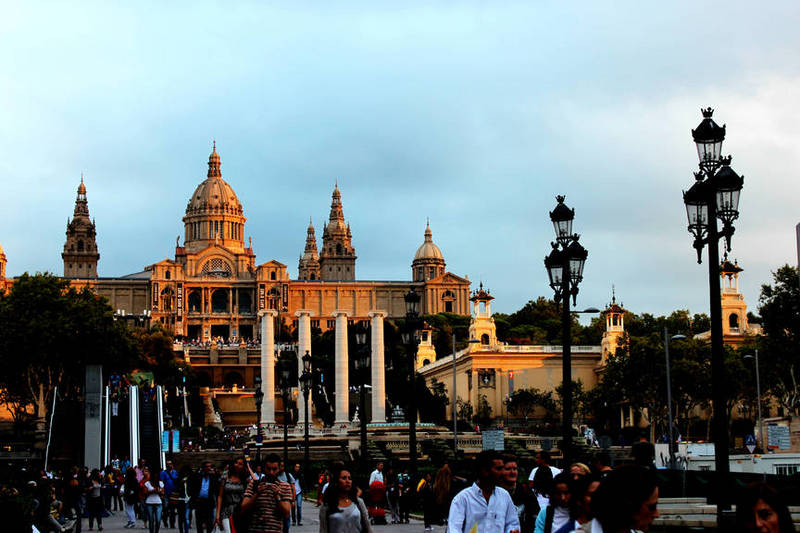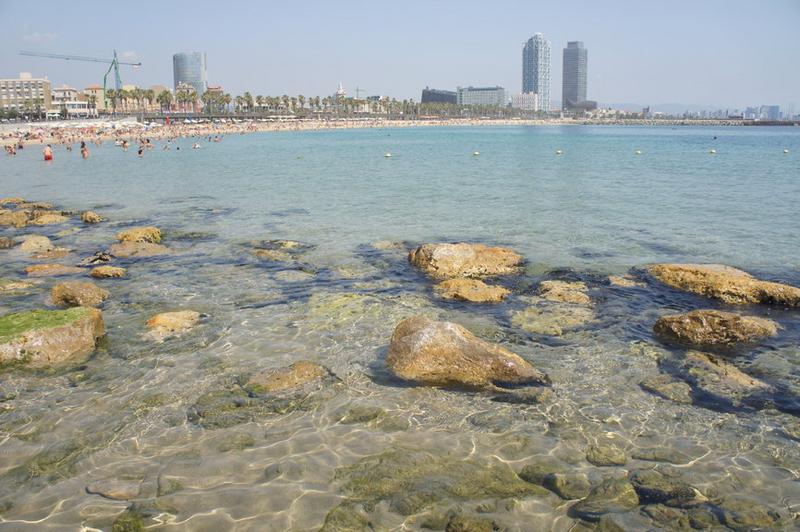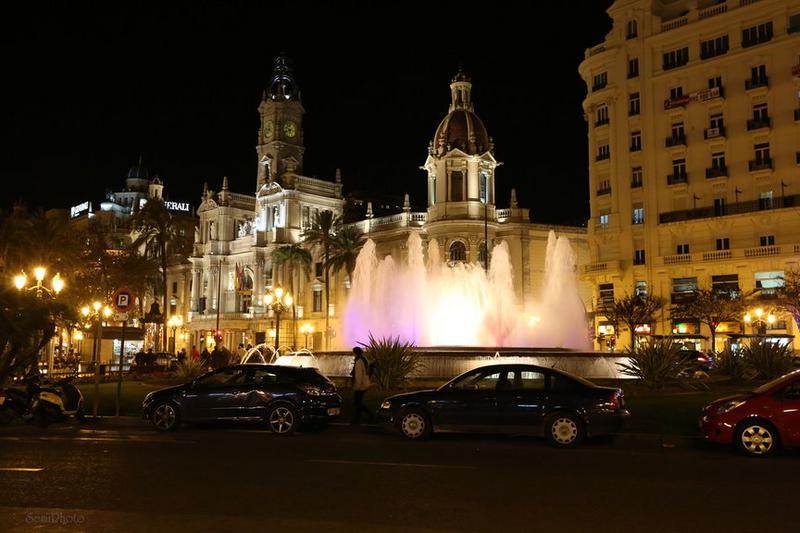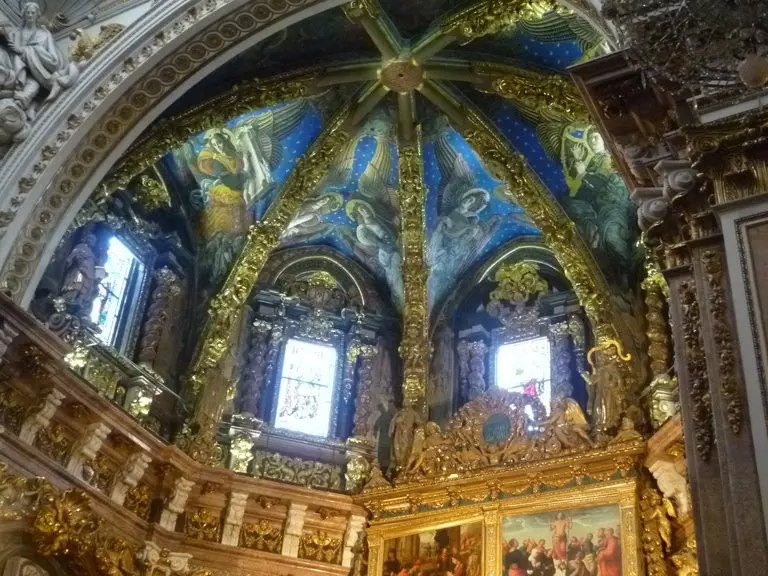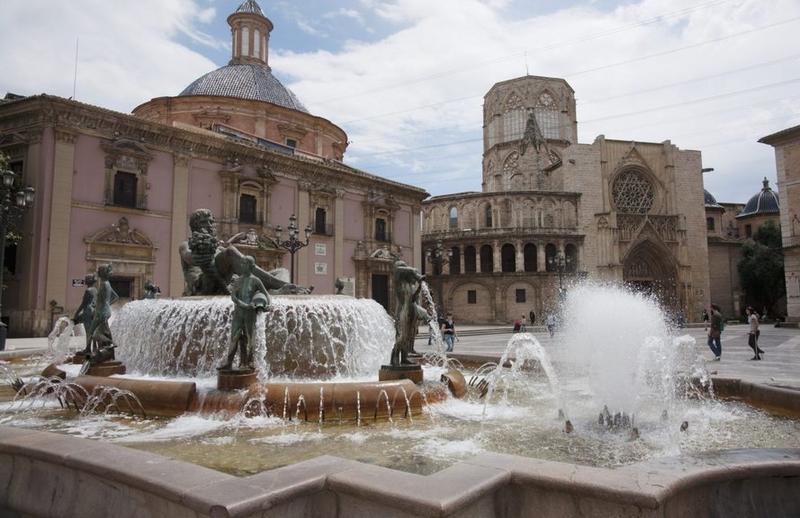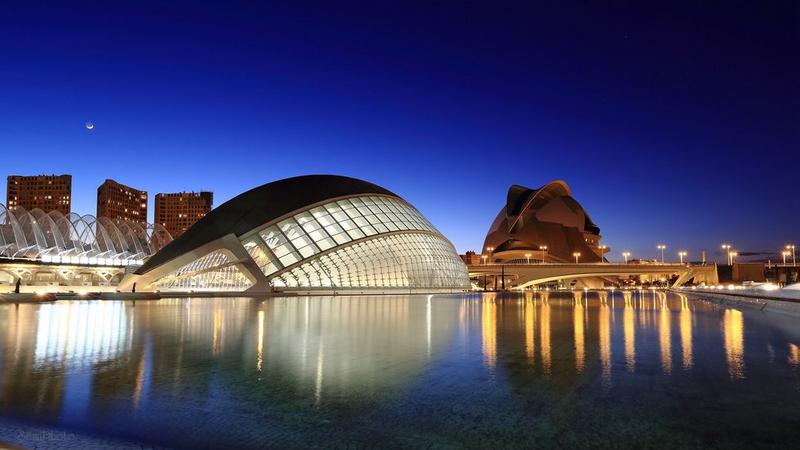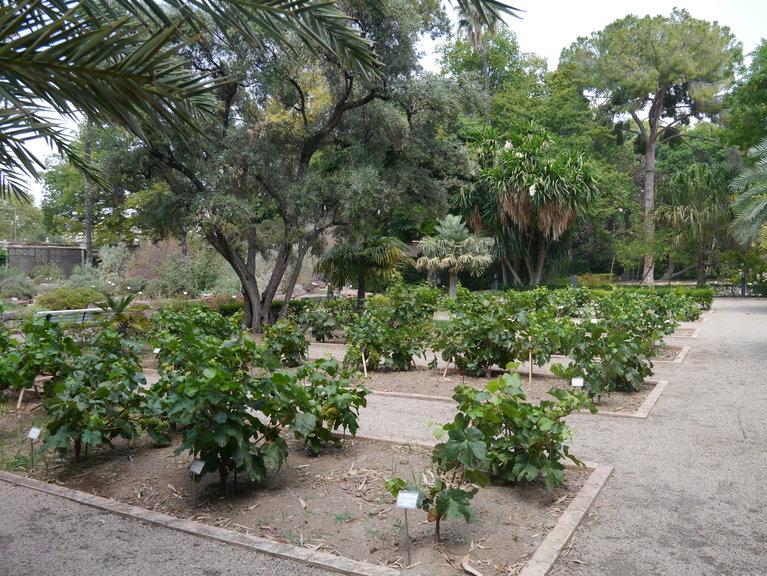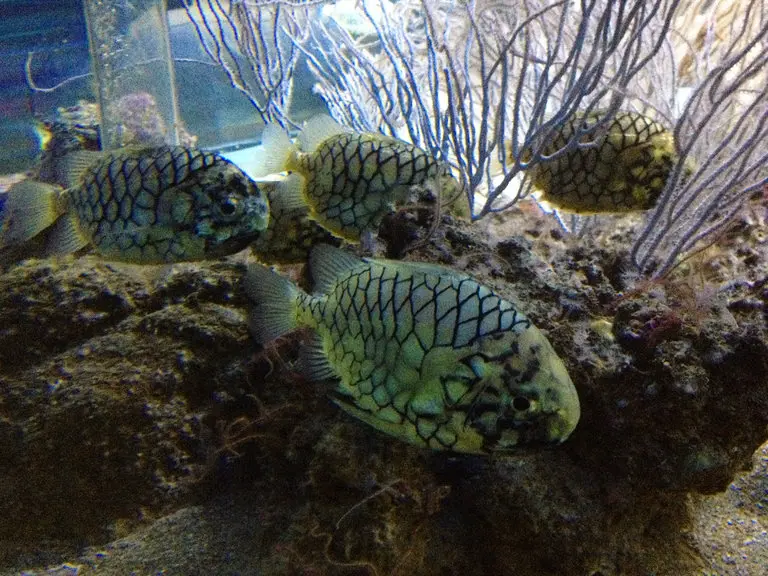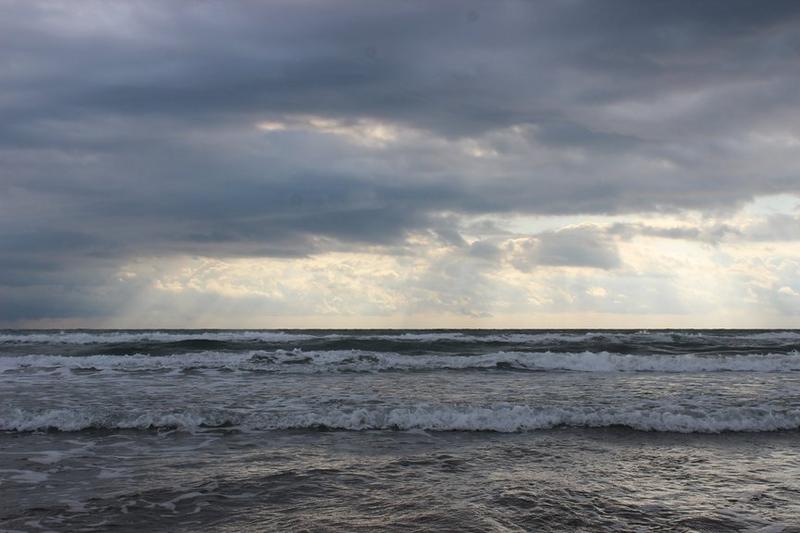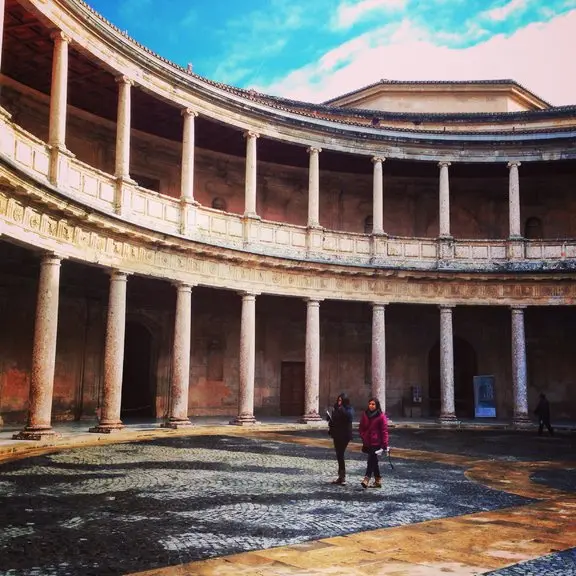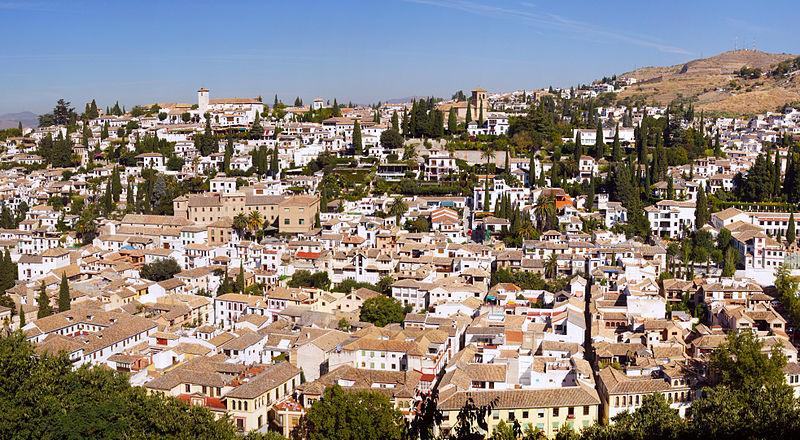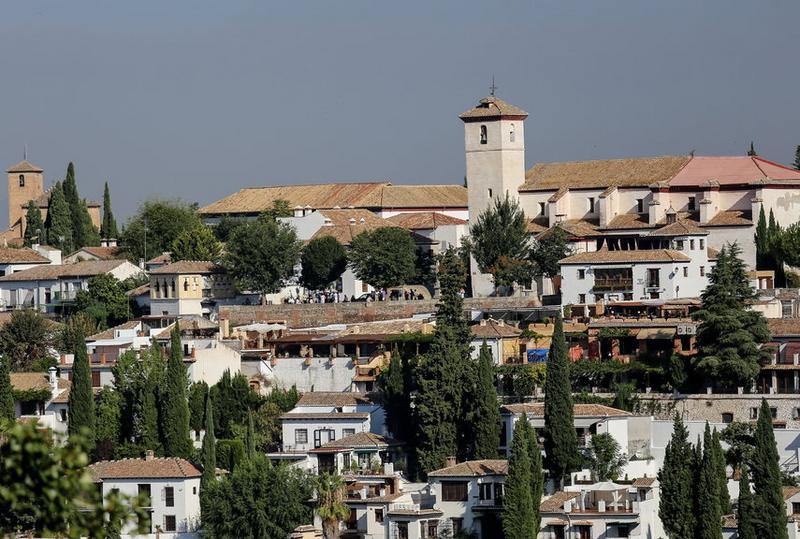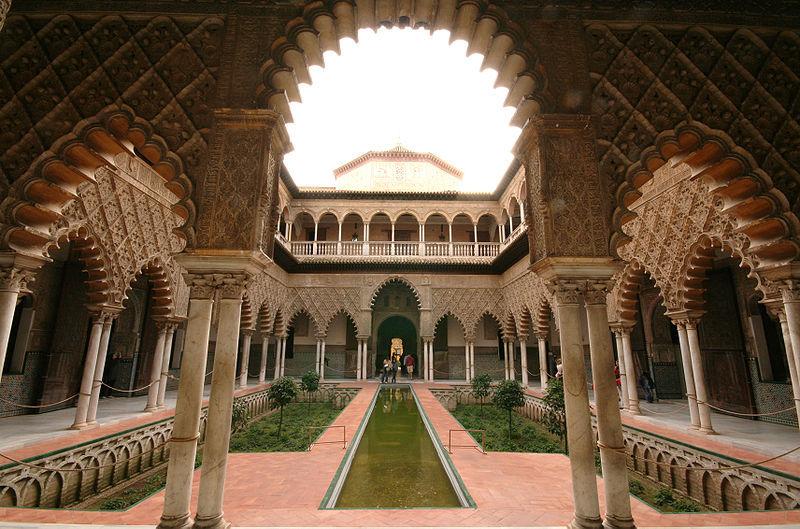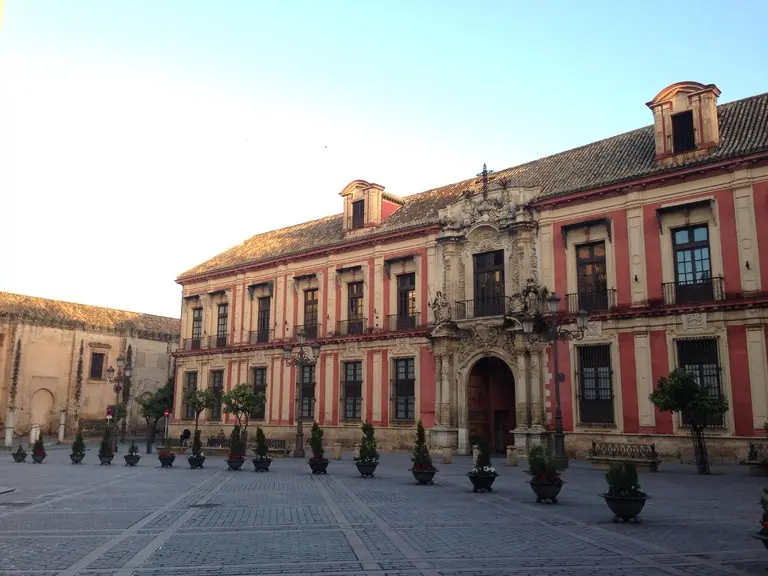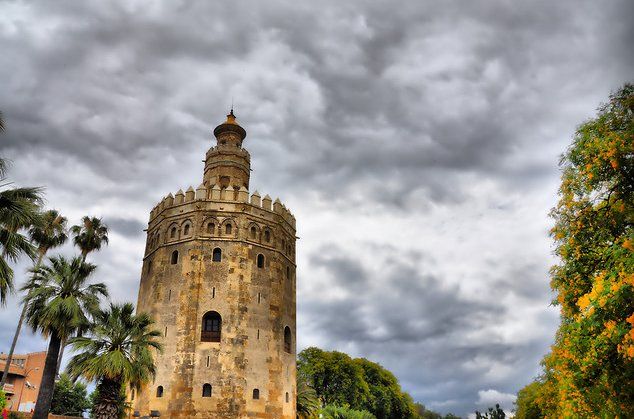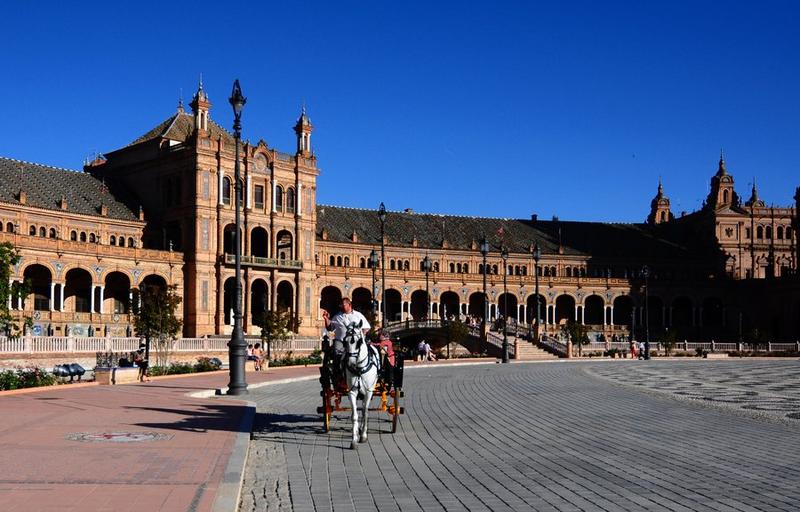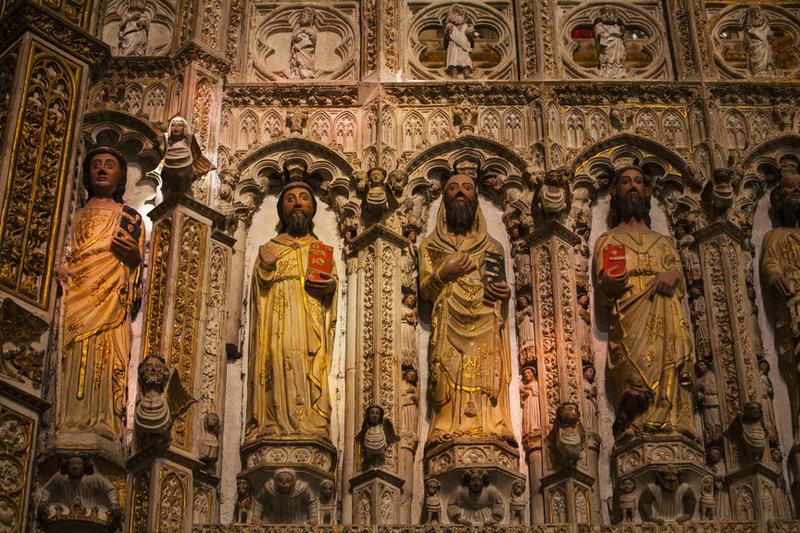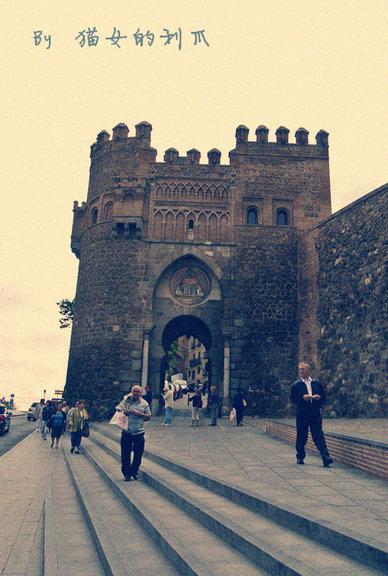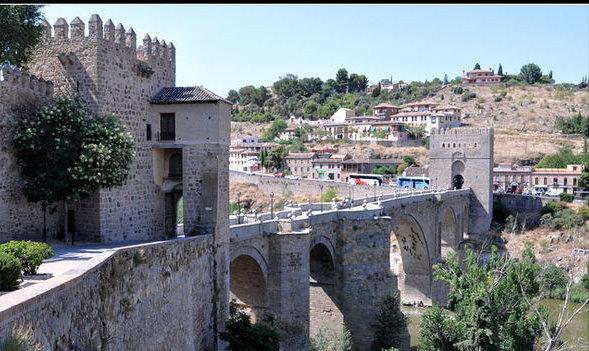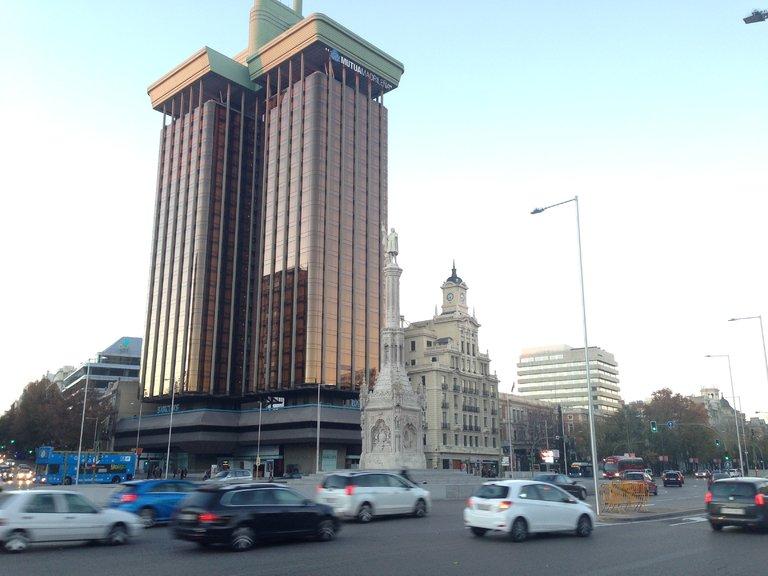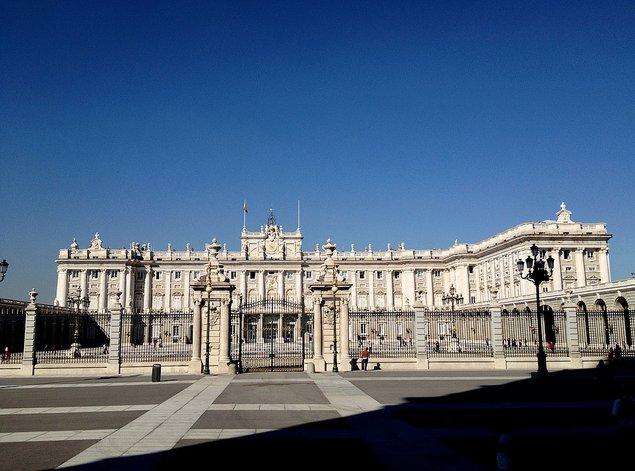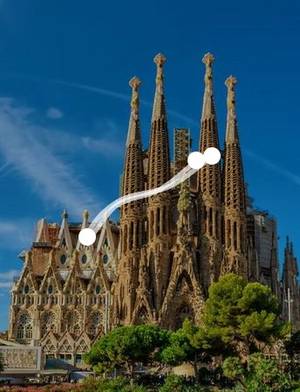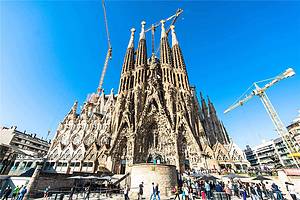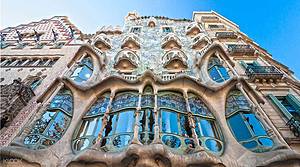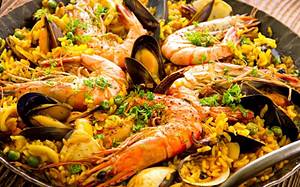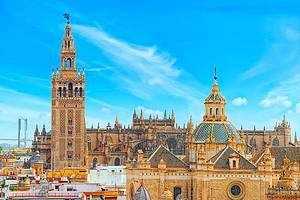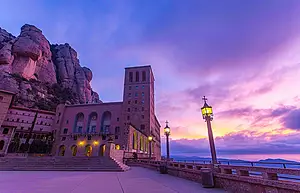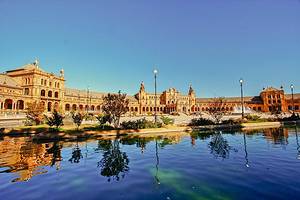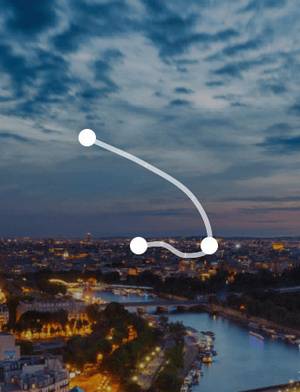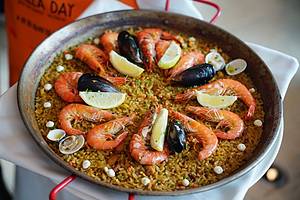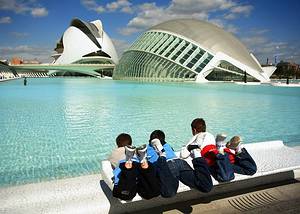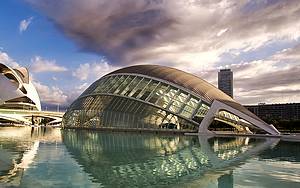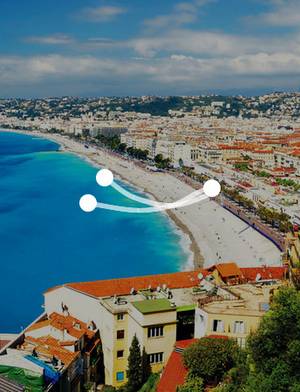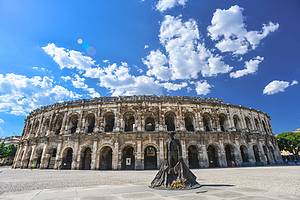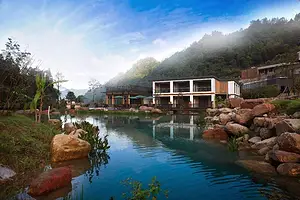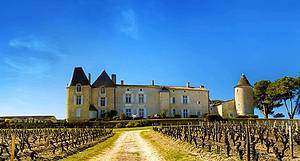8-day road trip on the North-South Ring Road in Spain
6 cities |
34 attraction(s) |
total distance 161
km
 TIPS
TIPS
Day1
Day2
Day3
Day4
Day5
Day6
Day7
Day8
Day1: Barcelona
5 attraction(s) ·
6 km
1
The Sagrada Familia is the symbol of this city, attracting all the attention of those who come to this city. Inspired by nature, such as caves, mountains, flowers, and animals, the overall design of the Sagrada Familia is still incomplete due to lack of funds. Only tickets and donations are used to cover the construction costs. The top of the towers is covered with scaffolding. It is said that the Sagrada Familia, which has been standing for a hundred years, will be completed in 2026. Despite this, the people of Barcelona are not anxious or impatient; instead, they wait calmly and patiently. In 1926, on a summer night, Gaudi passed away in a car accident, and the Sagrada Familia was his final gift to the world. After that, Gaudi rests in the underground crypt of the Sagrada Familia, which he designed and is still unfinished, quietly waiting for the day this great project is completed.
In 1872, Josep Maria Bocabella, a bookseller from Barcelona, returned from a trip to Italy and conceived the idea of building a penitential church where people could pray to God and seek forgiveness. The construction of the Sagrada Familia began in 1882 and was taken over by Gaudi at the age of 31 in 1883. He designed the entire church as a "Bible" that could be carved in relief, depicting the birth of Jesus, his passion, and the glory of God on the three facades of the church.
The Passion facade is used to convey the pain that Jesus suffered under suffering and torment. It is entered through the carved door of the Passion with coded inscriptions. The interior design of the church is unique, consisting of curves and surfaces, and various combinations of spirals, cones, and parabolas create a rhythmic and dynamic architectural style. All the columns resemble tree trunks, branches, and tree eyes, inspired by nature. The main body of the church is predominantly Gothic in style but exhibits the "Gaudí touch." Plain, pale yellow and milky-white columns and walls create one wonderful space after another, outlined by black iron curves. Slow down, appreciate it carefully, and the colors become a subtle backdrop. Looking up at the top of the church, sunlight shines through several small openings, casting shadows, and tall tree trunks extend branches to support the towering spires. Stained glass windows reflect colorful flowers, and the entire church is filled with a dreamlike palette, like a kaleidoscope world.
Take the elevator of the Nativity facade and climb a few more steps to reach the viewpoint at the top of the church. The beautiful views of Barcelona unfold before your eyes. The Tower of Jesus, 170 meters high, is adorned with vibrant Venetian mosaic, making it the tallest building in Barcelona. With its eight completed spires reaching the sky, its towering presence can be admired from anywhere in the city.
3
km
2
Casa Milà, also known as La Pedrera, is the last private residence designed by Gaudi. Its distinctive features include three undulating walls, balconies with twisted iron railings and plates, and large windows. In 1986, it was purchased by Caixa de Catalunya bank and underwent extensive renovations. The ground floor now serves as a venue for exhibitions hosted by the bank's foundation. The six floors, rooftop, and rooftop terrace of Casa Milà are open to the public. The rooftop chimney is particularly unique, and from the terrace, visitors can enjoy views of the city streets and the distant Sagrada Familia.
1
km
3
The interior design of the Batllo House also adheres to Gaudi's consistent style, with no straight lines and angles, only soft wavy curves. Every door, door handle, and chair is designed to conform to the human body's curves, and the small details throughout the house are awe-inspiring. The elegant wooden staircase specially designed by Gaudi for the Batllo House leads from the ground floor to the main hall on the second floor. The top decoration of the staircase railing is exceptionally exquisite, with a metallic thin sheet wrapped around an orange glass sphere. The ceiling of the main hall has a smooth surface that swirls outward, and the large windows with movable upper and lower frames provide a view of Gracia Avenue.
The design inspiration for the building's courtyard comes from the deep sea. In order to create a gentle light contrast, Gaudi used 15,000 blue tiles in five different shades, with the color becoming darker as it gets closer to the top of the building, as if gradually sinking into the depths of the ocean from the shimmering sea surface. In contrast to the colorful decorations and designs of the other floors, the loft's walls are in pure white tones, with a hanging chain arch structure as the basic architectural framework, reminiscent of the chest and ribs of a giant animal, while also providing temperature regulation for the entire building. The construction of the Batllo House came from a architectural design competition in Barcelona, inspired by the folk story of Saint George slaying the dragon. The large floor-to-ceiling windows on the second floor and the small decorative exterior columns resemble dragon's teeth. The design and arrangement of the roof tiles represent the dragon's fin, and the roof, with its scaled arches, resembles the dragon's back. The tall cross-shaped tower on the roof is like the holy sword inserted into the dragon's body. Another design inspired by natural objects is the spiral staircase leading to the roof. Gaudi favored this curved and natural rhythmic shape and gave the rooftop platform of the Batllo House a unique style. The surface of the chimney and ventilation ducts is made up of fragmented ceramic mosaics, which is a concrete manifestation of Gaudi's unique artistic style.
2
km
4
Catalunya Square is a large square in the old town center of Barcelona, Spain. It is a hub for shopping, entertainment, and transportation, with several important streets intersecting here. The square is surrounded by tall buildings, adjacent shops, and various restaurants and bars of different grades. It covers an area of 50,000 square meters and is famous for its fountain and sculptures.
2
km
5
Gothic Quarter is one of the four districts in the old city of Barcelona. Many buildings date back to the Middle Ages and some can be traced back to ancient Roman times. The old cathedral and the royal palace in the historic center are still in use and well preserved. Highlights of the Gothic Quarter include the Santa Maria del Mar church and several restored palaces and mansions on Montcada Street. The area also features remnants of the Roman city walls. The Gothic Quarter is small and perfect for walking tours.
Day2: Barcelona
4 attraction(s) ·
22 km
1
Park Güell, also known as Güell Estate, is an early work of Gaudí. It has a strong Oriental influence in the exterior, with windows designed for ventilation in desert-like regions, the use of bricks instead of stones in geometric wall formations commonly seen in Moorish-style architecture, and decorative ceramic tile accents. As part of Antoni Gaudí's works, it is listed as a UNESCO World Heritage site. Gaudí showcased his extraordinary talent in landscape planning, with the famous lizard sculpture at the main entrance and a surrealistic paradise of vibrant colors. His former residence, the pink house, is now a museum.
6
km
2
Camp Nou, also known as the Ruyi Stadium, is a football stadium located in Barcelona, the capital of Catalonia. It is the home stadium of the La Liga team Barcelona and is one of the most well-known football stadiums in the world. It has a seating capacity of 99,354 people, making it the largest football stadium in Europe. In the 1998-1999 season, it was selected as a five-star stadium by the Union of European Football Associations. The stadium also houses the FC Barcelona Football Museum, which showcases the team's historical trophies, photos, and memorabilia of soccer stars such as shoes and jerseys. The exhibition uses high-tech methods such as 3D movies and touch screens.
14
km
3
Barceloneta Beach is a popular beach in Barcelona, often crowded in the summer. There are also some interesting sculptures on the beach.
3
km
4
La Rambla is the wanderer street under Yu Qiuyu's pen. This can be said to be the most energetic street in Spain, gathering artists and tourists from all over the world. During the day, it is a paradise for street art and food (the famous La Boqueria market is located on the street), and after the midnight bell rings, it becomes a playground for Barcelona's nightlife (especially the Raval area to the west, with various themed bars).
La Rambla also connects Catalonia Square and the Mediterranean Bay. Walking along La Rambla to the beach under the invincible sunlight of the Mediterranean will make you experience the colorful and joyful Barcelona! If you can't stand the crowded people on the street, you can also choose a pleasing alley on the left or right to explore the historic Gothic quarter to the east or the La Raval area to the west, which is popular among hippies (usually with their own dogs). But remember to keep an eye on your wallet and valuables.
Day3: Valencia
4 attraction(s) ·
9 km
1
Valencia City Hall Square is surrounded by iconic buildings such as the City Hall, the Bullring, the North Train Station, and the Central Post Office, and is one of the most important squares in the city center. There are many souvenir shops and flower shops around the square. If you're tired from walking, it's quite pleasant to buy a bouquet of flowers, sit in the square under the sunset, and feed the pigeons. During the Fallas festival, a small firecracker ceremony called Mascaletas is held every noon in the City Hall Square.
1
km
2
The Valencia Cathedral, located in the old town area, combines Romanesque, Gothic, Renaissance, Baroque, and Neoclassical architectural styles. It was built in the 13th century. During the Moorish rule, it was converted into a mosque and restored as a Roman Catholic cathedral in 1238. The Valencia Cathedral is now considered a landmark historical building in the city. The tower next to the Baroque Puerta de Hierros gate was built in the 13th-14th century and stands at a height of 50.85 meters. Climbing to the top of the tower offers a panoramic view of the entire old town of Valencia. The legendary Holy Grail is said to be housed here.
4
km
3
Santa Catalina Square is one of the landmarks in the old town of La Seu. There are some small restaurants and cafes around the square, making it a popular leisure spot for locals. The square is home to a famous fountain statue called Fuente del Turia, with eight bronze statues of naked women surrounding a male figure in the center, representing the eight water channels that encircle the Turia River. At the end of the Fallas festival, a grand flower offering ceremony for the Virgin Mary is held in the square.
4
km
4
When it comes to examples of futuristic architectural style in Spain, the City of Arts and Sciences in Valencia is definitely a must-visit place. Designed by local architect Santiago Calatrava, the complex of buildings is often referred to as alien architecture. The main components of the City of Arts and Sciences include the IMAX cinema shaped like an eye (Hemisféric), the fishbone-shaped Prince Felipe Science Museum (El Museo de las Ciencias Príncipe Felipe), the Queen Sofia Palace of the Arts (Palau de las Artes Reina Sofia), the largest aquarium in Europe with over 40,000 marine animals (Oceanográfico), and the golden dock bridge (Puente l'Assut d'Or). Visitors can explore the interiors or simply admire these magnificent buildings from the outside, with the clear pools and flawless blue sky creating a perfect harmony that is truly awe-inspiring. Additionally, the venue for the Valencia Open tennis tournament is also located here.
Day4: Valencia
5 attraction(s) ·
13 km
1
The Valencia Botanical Garden was originally built in 1802 for university botanical teaching, but it has been relocated and renovated since then. It is now the first botanical garden in Spain and is home to over 3,000 plant species, including some rare tropical plants and desert plants.
3
km
2
The bullring, located on Xátiva Street in the city center, is adjacent to the North Train Station. Both are historic buildings. The bullring was built between 1850 and 1860. In addition to hosting bullfighting during the bullfighting season, it also frequently holds large-scale events. The adjacent North Train Station is a symmetrical building. Passengers who get off at the North Train Station can experience a unique and nostalgic atmosphere, with beautiful colored tiles on the interior walls, and mosaic tiles with "Bon Voyage" in different languages, wishing the departing passengers a pleasant journey. The station has a special charm when illuminated by lights at night.
4
km
3
Valencia Oceanarium, the largest in Europe, is divided into five main venues. Dolphin shows are held every half hour to an hour, and it is recommended to arrive 20 minutes in advance.
6
km
4
A must-visit place in Valencia is the beach. The sea is clean, the sand is fine, and the coastline is long. There are also many beautiful bikini girls. The facilities are relatively complete, with toilets, bathing areas, and foot washing areas. There are also shops selling swimsuits and slippers, all at affordable prices. Suitable for summer visits.
2
km
5
La Malvarrosa is the most popular beach in the city center of Valencia. June to September is the best time for sunbathing and the busiest time on the beach. The beach has basic facilities such as parking, toilets, and restaurants. Sometimes you can also see beautiful sand sculptures and many young people playing beach volleyball.
Day5: Granada
3 attraction(s) ·
17 km
1
Alhambra
The name of the Alhambra Palace comes from Arabic and means "the red fortress". It is a representative of Arab-style palace courtyards and is located on the Nevada Mountains outside Granada. As a perfect combination of Islamic architecture and gardening, the Alhambra Palace was included in the World Heritage List by UNESCO as early as 1984. The main areas to visit in the Alhambra Palace include the Alcazaba fortress, the Nazarí Palaces, the Generalife Palace, the Mosque Baths, and the Gardens.
16
km
2
Albayzín is a district in the Spanish city of Granada, Andalusia, preserving narrow and winding medieval Moorish streets. It was declared a UNESCO World Heritage Site in 1984 along with the famous Alhambra Palace. Albayzín is located on a hill facing the Alhambra, and many visitors come to enjoy the view of the palace from the perspective of the Church of Saint Nicholas. Highlights of the Albayzín district include the Arab baths, the Granada Archaeological Museum, and the San Salvador Church built on the remains of a Moorish mosque. Albayzín also contains some original Moorish houses and a variety of restaurants, including several streets lined with North African snack shops.
2
km
3
The Mirador de San Nicolás, located in the oldest district of Albaicín in Granada, was originally a fortress built by the Moors and later served as a sanctuary for the Moors and Jews after the Christians reconquered the area. From a distance, the entire hill looks like a white village. The most famous attraction here is the Mirador de San Nicolás, which is adjacent to the Alhambra. From this viewpoint, you can enjoy a panoramic view of the city, especially during sunset when the light illuminates the entire city, making you feel like you're in a postcard.
Day6: Sevilla
5 attraction(s) ·
8 km
1
Alcázar de Sevilla
The Palace of Seville is the oldest royal palace in Europe and was designated as a World Heritage site in 1987. It was originally a Moorish castle in the Middle Ages, and later merged Islamic, Christian, and Gothic styles, representing the architectural styles of Andalusia. The Palace's Palacio de Pedro I, Palacio de Carlos V, and the Courtyard of the Maidens are all worth a visit. In addition to the buildings, the Palace's gardens also blend both Arabic and Gothic styles, making it visually stunning. It is also the filming location for the Gardens of the Water in the TV series "Game of Thrones."
1
km
2
The Sacristy of the Main Chapel of Seville Cathedral is an attached building to Seville Cathedral, completed in 1543. The arch-shaped entrance is uniquely decorated with carvings of a safe, representing different types of food and dishes. The interior decoration of the building is the most beautiful in the cathedral.
3
km
3
The Golden Tower is a twelve-sided military watchtower in Seville, Spain, built during the 13th century by the Almohad dynasty. Its purpose was to control the waterway from the Guadalquivir River to Seville, providing security for the Spanish treasure fleet carrying precious metals back from the Americas. The tower is divided into three levels, with the top level added in 1760. A large iron chain could be pulled from the bottom of the tower to blockade the river. The counterpart on the opposite bank has been demolished or disappeared, possibly destroyed during the Lisbon earthquake of 1755. In 1248, during the reconquest of lost territories, the city used the iron chain to defend against the Castilian fleet. Today, the Golden Tower has been restored and serves as a naval museum, containing prints, letters, models, tools, and historical archives. The museum provides an overview of Seville's naval history and the importance of this river. The Golden Tower appears in Age of Empires II and Age of Empires III.
2
km
4
The Plaza de España is located on the edge of Maria Luisa Park. It was originally designed and built by the Sevillian architect Aníbal González for the Ibero-American Exposition of 1929. It is a semi-circular square with a diameter of 200 meters, formed by three buildings, with a continuous row of buildings surrounding the edge of the square. It can be reached through a canal with many beautiful bridges. In the center of the square, there is a large fountain. Today, the square is mainly occupied by government buildings. The walls of the square have many niches, each representing a different province of Spain. Visitors can take photos representing each province. Different architectural styles of Spain can also be seen in the square, including Gothic, Moorish, and silversmith styles. Visitors interested in Seville's archaeology or folklore can also visit the archaeological and folklore museums located in the buildings of the square.
4
km
5
The Santa Cruz district, adjacent to the Seville Royal Palace, is the old town of Seville. It is also known as the old Jewish quarter, as in the 13th century, King Ferdinand III gathered the Jews here after conquering Seville, and in the mid-15th century, the Jews were expelled, and the district was mostly inhabited by the wealthy. In the narrow alleys of the Santa Cruz district, you can still see buildings with a preserved antique style, as well as many unique restaurants and shops. The district is made up of narrow streets and alleyways, which were built by the Jewish people to escape the summer sun of Seville, creating a flow of dry and cool air in these winding alleys. When strolling in the Santa Cruz district, it is natural to visit the Holy Cross. On Santa Teresa Street, the location of the Murillo Museum and the Carmen Caleruega Convent, you can see a 17th-century red wooden cross. In the 18th century, the district underwent reconstruction, and some famous former synagogues were converted into churches, such as the Snow Mother Church (Iglesia de Santa María de las Nieves) and the White Mother Church (Iglesia de Santa María la Blanca) near the Santa Cruz district.
Day7: Toledo > Madrid
4 attraction(s) ·
79 km
1
Toledo Cathedral, one of the largest cathedrals in the world, is a masterpiece of Gothic art and a prime historical witness. It is a medieval city that still retains its charm. The cathedral was the largest in the Christian diocese of Spain at the time and is the second largest cathedral in Spain. Construction began in 1247 and was completed in 1493. It adopted the rarely used French Gothic architectural style in Spanish churches at the time. The Spanish Gothic art style is fully reflected in the cathedral's architecture. It imitated the Bourges Cathedral in France, and the consequence of the plan with five central aisles was to cover the previous mosque with the cathedral and the sahn with the monastery. It also incorporates some features of the Mudéjar style, mainly reflected in the multi-lobed arches of the cloister. The marvelous interaction of light and the vaulted ceiling is a more remarkable aspect. The building material, white stone, comes from Olihuelas near Toledo.
2
km
2
The Sun Gate is a must-see attraction in Toledo. It was built in the 13th century and has a typical Arab style - tall, magnificent, and majestic. There are two explanations for its name: one is that there are sun and moon patterns on the gate; the other is that during the reign of Alfonso X, the gate was located on the prime meridian, and sunlight shines on it from sunrise to sunset.
2
km
3
Built in the 13th century, there are two defensive towers standing at the bridgehead, which belong to the Gothic style. The Monastery of San Juan of the Catholic Kings, a Gothic-style monastery, is a masterpiece by Juan Guas, commissioned by the Catholic Kings. The outstanding features of this monastery are its elaborate decorations and exquisite sculpture art on the cloisters.
76
km
4
Columbus Square is home to a statue of the great explorer Columbus, who discovered the Americas. The square is 100 meters square, with the statue standing 2 meters above the street, creating a magnificent sight. The square features a monument, sculptures, waterfalls, and fountains that depict Columbus's journey to the New World. The monument is made of white marble and stands 17 meters tall, with a statue of Columbus on top. The reliefs on the monument tell the story of Columbus's voyage and the support he received from Queen Isabella. The square has been expanded and now includes an underground cultural center with theaters, art exhibits, and a library.
Day8: Madrid
4 attraction(s) ·
11 km
2
The Prado Museum is one of the best museums in the world and is one of the most visited attractions in Madrid. It houses the finest works of Spanish art from the 16th to the 19th century, including works by Velázquez, Goya, and Greco, as well as a large collection of works by foreign Renaissance painters such as Tiziano from the Venetian school, Rubens from the German Baroque school, and Hieronymus Bosch from the Dutch Surrealist movement. The museum currently has a total collection of 27,509 artworks, including 7,825 oil paintings, which is quite impressive.
Unlike other large European museums like the Louvre in Paris and the National Gallery in London, which collect works from various eras and different artistic styles, the Prado Museum initially received donations of artworks from the royal family who were art enthusiasts, so the styles are more similar. The museum was commissioned to be built by King Carlos III in 1786 and opened to the public in 1819. Famous artists such as Monet, Renoir, Lautrec, Picasso, Matisse, and Dali have visited the museum and have been influenced by its painting styles.
2
km
3
Museo Nacional Centro de Arte Reina Sofía
The Queen Sofia Arts Center houses nearly 18,000 art pieces, ranging from the 19th century to the present. The most important works come from 20th-century Spanish painters such as Picasso, Dali, and Miro. The most worth-visiting piece is Picasso's "Guernica," a massive painting measuring approximately 8 meters long and 4 meters wide. Created in 1937, it depicts the scene of the small Basque town of Guernica, which was destroyed by the German and Italian air forces during the Spanish Civil War. It is recommended to allocate at least 2 hours for the visit.
6
km
4
Gran Vía is a luxurious and upscale shopping street in the center of Madrid, the capital of Spain. It stretches from Alcalá Street in the east to Plaza de España in the west. It is one of the city's most important shopping areas, with numerous hotels and large cinemas, and is known for its large buildings. Most of the theaters have now been replaced by shopping malls. In the mid-19th century, urban planners in Madrid decided to build a new thoroughfare connecting Alcalá Street and Plaza de España. This project involved the demolition of many buildings in the city center and was called the "axe on the map." After several decades of planning, construction had not yet begun, so the media sarcastically referred to it as the "Great Road" (Gran Vía). Finally, it was approved in 1904 and construction began two years later. The last section of the street was completed in 1929.
